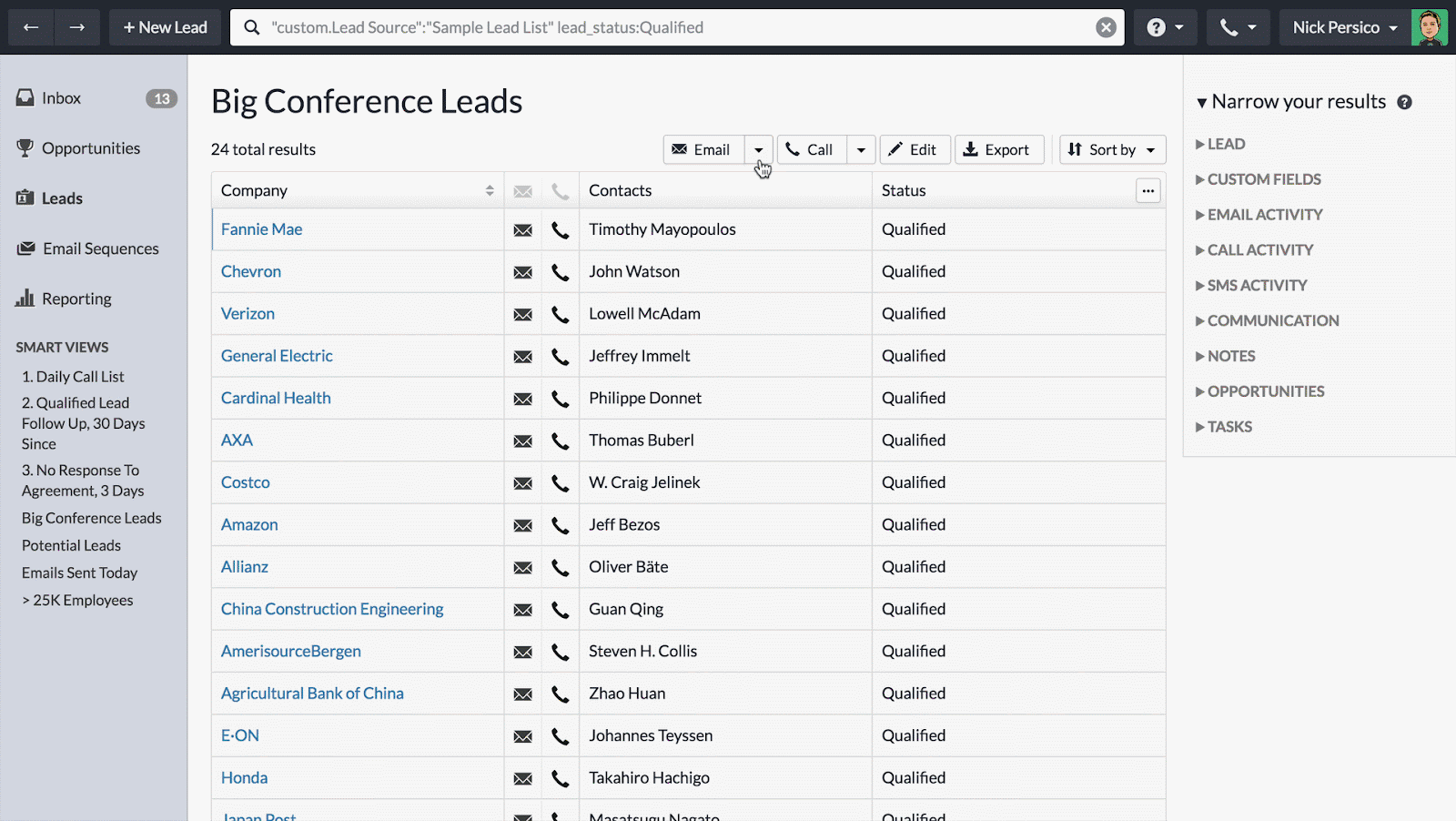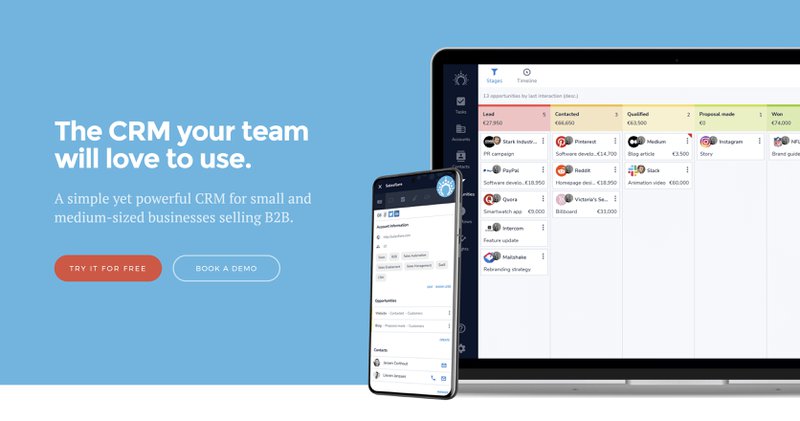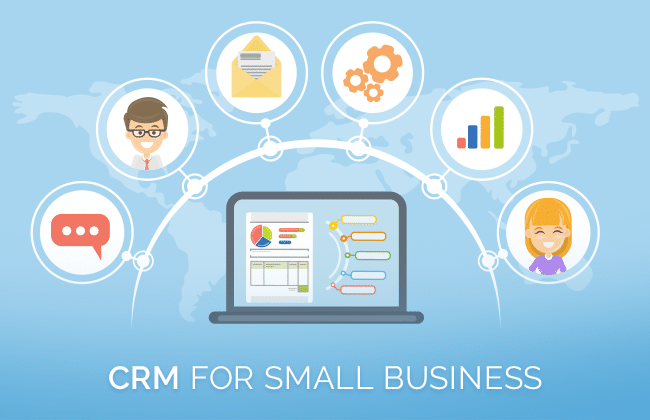In the fast-paced world of business, innovation is the lifeblood of survival and success. For small businesses, this is particularly true. With limited resources and fierce competition, the ability to adapt, evolve, and introduce new ideas is crucial. This is where Customer Relationship Management (CRM) systems step in, acting as a catalyst for innovation and driving sustainable growth. This article delves into the transformative power of CRM for small businesses, exploring how it fosters innovation, streamlines operations, and ultimately, helps them thrive in today’s dynamic marketplace.
The Innovation Imperative for Small Businesses
Small businesses are the engines of economic growth, but they often face unique challenges. Unlike larger corporations with vast resources, they need to be agile, responsive, and constantly seeking new ways to gain a competitive edge. Innovation isn’t just about inventing the next big thing; it’s about finding smarter, more efficient ways to operate, serve customers, and create value. This could mean anything from developing a new product or service to optimizing internal processes or finding more effective marketing strategies.
The core of innovation lies in understanding your customers. What are their needs? What are their pain points? What are their aspirations? Without this deep understanding, any innovation efforts are likely to miss the mark. This is where CRM shines. It provides a centralized hub for all customer-related data, enabling businesses to gain invaluable insights and make informed decisions.
What is CRM and Why Does it Matter for Innovation?
CRM, at its heart, is a technology that manages all your company’s relationships and interactions with customers and potential customers. It’s more than just a contact database; it’s a comprehensive platform that integrates sales, marketing, customer service, and often, other crucial business functions. For small businesses, CRM offers a multitude of benefits that directly fuel innovation:
- Centralized Customer Data: CRM systems store all customer information in one place, providing a 360-degree view of each customer. This includes contact details, purchase history, communication logs, and any other relevant data.
- Improved Customer Understanding: By analyzing customer data, businesses can identify trends, preferences, and behaviors. This understanding is crucial for developing new products, services, and marketing campaigns that resonate with their target audience.
- Enhanced Communication: CRM facilitates seamless communication across all departments. Sales, marketing, and customer service teams can access the same information, ensuring consistent messaging and a personalized customer experience.
- Streamlined Processes: CRM automates many repetitive tasks, such as data entry and email marketing, freeing up valuable time for employees to focus on more strategic initiatives, like innovation.
- Data-Driven Decision Making: CRM provides real-time data and analytics, allowing businesses to make informed decisions based on facts rather than guesswork.
- Increased Efficiency: By automating tasks and streamlining workflows, CRM helps businesses operate more efficiently, reducing costs and improving productivity.
In the context of innovation, these benefits translate into a powerful competitive advantage. CRM empowers small businesses to:
- Identify unmet customer needs: By analyzing customer interactions and feedback, businesses can uncover gaps in the market and develop solutions to address them.
- Personalize the customer experience: CRM allows businesses to tailor their products, services, and marketing messages to individual customer preferences, increasing satisfaction and loyalty.
- Test and iterate quickly: With CRM, businesses can easily track the performance of new products or campaigns, allowing them to make adjustments and improvements in real-time.
- Foster collaboration and knowledge sharing: CRM provides a central platform for teams to share information and collaborate on projects, leading to more innovative ideas.
Key Features of CRM Systems That Drive Innovation
Not all CRM systems are created equal. However, several core features are essential for driving innovation within a small business:
1. Contact Management
At the heart of any CRM is contact management. This feature allows you to store and organize all your customer information, including contact details, communication history, and purchase history. By having all this information readily available, your team can quickly access the data they need to understand your customers better. This knowledge is fundamental to identifying opportunities for innovation, such as tailoring products, services, or marketing campaigns to meet specific customer needs.
2. Sales Automation
Sales automation streamlines the sales process, freeing up your sales team to focus on building relationships and closing deals. This includes features like lead scoring, automated follow-up emails, and sales pipeline management. By automating repetitive tasks, sales automation allows your team to be more productive and efficient, enabling them to spend more time on strategic initiatives, such as identifying new market opportunities or developing innovative sales strategies.
3. Marketing Automation
Marketing automation tools enable you to create and manage marketing campaigns, track customer behavior, and personalize your marketing messages. Features like email marketing, social media integration, and lead nurturing help you to engage with your customers and prospects in a more meaningful way. By understanding customer behavior and preferences, you can tailor your marketing efforts to drive innovation, such as developing new products or services that meet specific customer needs.
4. Customer Service Management
Customer service management features help you to provide excellent customer service, resolve customer issues, and gather customer feedback. Features like help desk software, live chat, and knowledge bases enable you to provide prompt and efficient support. By analyzing customer feedback and support interactions, you can gain valuable insights into customer pain points and identify opportunities for innovation, such as improving your products or services or developing new customer service strategies.
5. Reporting and Analytics
Reporting and analytics tools provide you with real-time insights into your sales, marketing, and customer service performance. Features like dashboards, reports, and data visualization tools enable you to track key metrics, identify trends, and make data-driven decisions. By analyzing your data, you can identify opportunities for innovation, such as optimizing your marketing campaigns, improving your sales processes, or developing new products or services.
6. Integration Capabilities
The ability to integrate with other business applications is crucial for CRM’s effectiveness. Look for a CRM that integrates with your existing tools, such as email marketing platforms, accounting software, and social media channels. This integration allows for seamless data flow and a unified view of your customer data, further fueling innovation by providing a more comprehensive understanding of your customers and their needs.
How CRM Fuels Innovation in Specific Areas
The impact of CRM on innovation extends across various aspects of a small business:
1. Product Development
CRM provides invaluable insights into what customers want and need. By analyzing customer feedback, purchase history, and communication logs, businesses can identify unmet needs and emerging trends. This information can then be used to develop new products or features that directly address customer pain points and preferences. CRM also allows for A/B testing of new product ideas, enabling businesses to gather real-time feedback and iterate quickly. This data-driven approach to product development significantly increases the chances of success.
2. Marketing and Sales
CRM empowers marketing and sales teams to personalize their outreach and target the right customers with the right messages. By segmenting customer data, businesses can tailor their marketing campaigns to specific customer groups, increasing engagement and conversion rates. CRM also provides insights into which marketing channels are most effective, allowing businesses to optimize their marketing spend. Sales teams can use CRM to track leads, manage their pipelines, and close deals more efficiently. This improved efficiency allows them to focus on building relationships and identifying new sales opportunities.
3. Customer Service
CRM provides a centralized platform for managing customer service interactions, ensuring that every customer receives consistent and personalized support. By tracking customer issues and resolutions, businesses can identify common pain points and proactively address them. CRM also allows businesses to gather customer feedback and use it to improve their products, services, and overall customer experience. Happy customers are more likely to be loyal customers, and loyal customers are more likely to provide valuable feedback and referrals, which can fuel further innovation.
4. Operational Efficiency
CRM streamlines many internal processes, freeing up employees to focus on more strategic initiatives. For example, CRM can automate tasks such as data entry, email marketing, and appointment scheduling. This automation reduces the time and effort required to perform these tasks, allowing employees to dedicate their time to other areas of the business. CRM also provides insights into operational inefficiencies, allowing businesses to identify and address bottlenecks in their processes. By optimizing their operations, businesses can improve their productivity, reduce costs, and free up resources for innovation.
Choosing the Right CRM for Your Small Business
Selecting the right CRM is a critical decision. Here’s a guide to help you make an informed choice:
- Define Your Needs: Before you start evaluating CRM systems, take the time to understand your business needs and objectives. What are your goals for implementing a CRM? What specific features do you need? What are your budget and technical capabilities?
- Assess Your Current Infrastructure: Consider your existing technology infrastructure. Does the CRM integrate with your current systems, such as your website, email marketing platform, and accounting software? Integration capabilities are crucial for seamless data flow.
- Evaluate Features and Functionality: Look for a CRM that offers the features you need, such as contact management, sales automation, marketing automation, and customer service management. Consider the scalability of the CRM, ensuring it can grow with your business.
- Consider Usability and User Experience: The CRM should be easy to use and intuitive, allowing your team to quickly adopt and utilize it. Look for a user-friendly interface and consider the level of training and support provided by the vendor.
- Research Vendors and Pricing: Research different CRM vendors and compare their pricing models. Consider the total cost of ownership, including implementation, training, and ongoing support. Look for a vendor that offers a free trial or demo so you can test the system before committing.
- Prioritize Mobile Access: In today’s mobile world, it’s essential to choose a CRM that offers mobile access. This allows your team to access customer data and manage their tasks from anywhere, at any time.
- Focus on Security: Ensure the CRM vendor has robust security measures to protect your customer data. Look for features like data encryption, access controls, and regular security audits.
- Read Reviews and Get Recommendations: Research online reviews and get recommendations from other small businesses. This can provide valuable insights into the strengths and weaknesses of different CRM systems.
Implementing CRM for Maximum Innovation Impact
Simply implementing a CRM isn’t enough. To truly leverage its power for innovation, you need a well-defined implementation strategy:
- Plan and Prepare: Before you start implementing your CRM, develop a detailed implementation plan. This plan should outline your goals, timelines, and the roles and responsibilities of each team member. Make sure you have a clear understanding of your data and how you’ll migrate it into the new system.
- Data Migration: Accurately migrating your existing customer data into the CRM is crucial. Clean and organize your data to ensure accuracy and consistency. Consider using data migration tools to streamline the process.
- Training and Adoption: Provide comprehensive training to your team on how to use the CRM. Encourage adoption by highlighting the benefits and demonstrating how it will make their jobs easier. Make sure all employees are comfortable with the new system.
- Customize and Configure: Customize the CRM to meet your specific business needs. Configure the system to align with your workflows and processes. This might involve setting up custom fields, creating automated workflows, and integrating with other business applications.
- Monitor and Evaluate: Once the CRM is implemented, monitor its performance and evaluate its effectiveness. Track key metrics, such as customer satisfaction, sales conversion rates, and customer retention. Use this data to identify areas for improvement and make adjustments as needed.
- Iterate and Improve: CRM is not a set-it-and-forget-it solution. Continuously iterate and improve your CRM setup to optimize its performance and ensure it meets your evolving business needs. Regularly review your processes, gather feedback from your team, and make adjustments as needed.
Real-World Examples of CRM-Driven Innovation
Numerous small businesses have leveraged CRM to drive innovation and achieve remarkable results. Here are a few examples:
- A local bakery used CRM to track customer preferences and personalize their offerings. By analyzing purchase history and feedback, they identified a demand for gluten-free options and introduced a successful line of gluten-free baked goods.
- A landscaping company used CRM to manage their customer interactions and improve their customer service. They implemented a system that allowed them to quickly respond to customer inquiries, schedule appointments, and track project progress. This resulted in increased customer satisfaction and repeat business.
- A small software development firm used CRM to manage their sales pipeline and track leads. They implemented a lead scoring system that helped them prioritize their efforts and focus on the most promising opportunities. This resulted in a significant increase in sales and revenue.
- A boutique clothing store used CRM to personalize the shopping experience. They tracked customer purchase history and preferences, and used this information to make personalized recommendations and offer exclusive discounts. This resulted in increased customer loyalty and sales.
These examples demonstrate the power of CRM to drive innovation across various industries. By understanding their customers and leveraging the insights provided by CRM, these businesses were able to adapt to changing market conditions, create new value, and achieve sustainable growth.
The Future of CRM and Innovation
The future of CRM is inextricably linked to innovation. As technology continues to evolve, CRM systems will become even more sophisticated, offering new capabilities and opportunities for small businesses. Here are some trends to watch:
- Artificial Intelligence (AI): AI-powered CRM systems will become increasingly prevalent, offering features like predictive analytics, automated customer service, and personalized recommendations.
- Integration with the Internet of Things (IoT): CRM systems will integrate with IoT devices, providing businesses with real-time data about their customers and their environment.
- Enhanced Mobile Capabilities: CRM systems will become even more mobile-friendly, allowing businesses to access customer data and manage their tasks from anywhere, at any time.
- Focus on Customer Experience: CRM systems will increasingly focus on enhancing the customer experience, providing businesses with the tools they need to personalize their interactions and build stronger relationships with their customers.
Conclusion: Embrace CRM to Unlock Your Innovation Potential
In conclusion, CRM is not just a tool for managing customer relationships; it’s a powerful catalyst for innovation. By providing a centralized hub for customer data, streamlining processes, and enabling data-driven decision-making, CRM empowers small businesses to understand their customers, adapt to changing market conditions, and create new value. For any small business looking to thrive in today’s competitive landscape, embracing CRM is no longer optional; it’s essential. By implementing a well-chosen and effectively utilized CRM system, small businesses can unlock their innovation potential, drive sustainable growth, and achieve lasting success.
The journey towards innovation may seem daunting, but with the right tools and strategies, success is within reach. CRM provides the foundation for building strong customer relationships and gaining the insights needed to innovate. Embrace the power of CRM, and watch your small business flourish.


